Is the e-cat real II. The fading dream for free and abundant energy
During the last two years the Italian inventor Andrea Rossi has nourished the dream of cheap and abundant energy. Rossi claims nothing less than having developed a new energy producing device, based on LENR (low energy nuclear reaction) called energy catalyzer or e-cat.
In the time of peak oil, cheap and abundant energy could solve a global energy crisis. Such an energy source could as well possibly solve the world´s water supply problems, and desalination of sea water could become a commercially viable option.
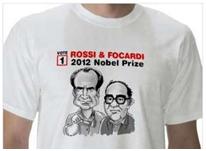 Fans honor Rossi like a rockstar wearing T-shirts calling for a Nobel prize.
Fans honor Rossi like a rockstar wearing T-shirts calling for a Nobel prize.
Some enthusiasts started chilling champagne bottles for the big e-cat party already one year ago. Hank Mills, Pure Energy Systems News[i] summarized on Dec.30, 2011“As 2012 approaches, it is clear that nickel-hydrogen cold fusion technology is going to change the world, as the production of a million E-Cat home units is planned. “ and further stated enthusiastically”The Proven Reality of E-Cat Technology”.
We believe that this judgment was a little premature. While we truly acknowledge that serious and good research has been made in more than 20 years of LENR research by honest and professional scientists, there are too many question marks and inconsistencies linked with the e-cat.
According to the most vocal critics, the e-cat is obvious fraud comparable to many other broken promises of physically impossible perpetuum mobile devices.
Gary Wright[ii] judges : “ The e-Cat of any type that is a product in R&D or for sale by Andrea Rossi or any of his companies or licensees is a fraud and a scam. They do not operate as claimed and as published. Every licensee trying to sell an e-Cat is involved in fraud and a scam.”
Steve Krivit[iii], editor of New Energy Times comments: “But I saw no evidence of Rossi’s claim of extraordinary levels of excess heat. He showed me no scientific data from previous experiments to support the claim.“
According to the e-cat promoters, the device produces energy from transmutation of nickel and hydrogen to copper in presence of a secret catalyst.
Various models are at play: A domestic e-cat (10 or 20 KW), expected price[iv] at 600-800 USD for 10 KW– allegedly ready for the market launch expected in 2013, pending due to certification for home use, a 1 MW unit for industrial use, priced at 1.5 mio USD, allegedly an established product in the market, a gas-cat and a hot-cat – both still in development stage. The newer models operating at higher temperatures are intended for electricity production, while earlier model are intended for heating purposes.
The price per power unit difference is quite remarkable, raising questions about the commercial approach: 1MW unit is priced at 1500 USD/kW compared with the 10 KW domestic unit priced at 80 USD/KW.
In 2011 Andrea Rossi made a series of audacious claims. Not only did he claim to have invented a new energy device, Rossi and his associates actually reported they would already sell e-cat devices.
- April 28, 2011: 97 E-Cats Continuously Operating in Four Locations Worldwide Today[v]
- October 31, 2011: Additional 1 MW E-Cat Plants Sold[vi], projected exponential Growth of Sales
- November 29, 2011: new Sale of 1 MW E-Cat Plant Made to “Normal” Customer[vii] (“normal” means non military customer)
- since November 2011 : the “1 MW e-cat” unit is on the market as heating device, according to Rossi´s Swiss distribution partner Transaltec [viii]
- first 1MW e-cat units were reportedly delivered in 2011 to the US military, who ordered in total 13 units for a total value of 34 mio USD[ix]
Considering these announcement, wouldn´t we expect excited pioneer users to report about their experience with this great device ? Industrial corporations would love to exploit the story for public relation, to decorate their glossy sustainability reports and carbon footprint track records with a new non-CO2 emission energy supply. We would expect user testimonials and for Rossi it would be an excellent marketing tool to present such user testimonials.
But very surprisingly, until today, guess how many of these users do we know ? Nobody.
Despite these claims there is no records for transactions of actual sales of e-cat units, and remarkably, until today, there is not even one real user confirmation or customer testimonial. This raises the question: is this all real ?
During the course of this year Mr Rossi also reported remarkable progress on the scaling up of manufacturing and hiring employees
- Jan 2012 Robotized E-Cat Factory Becoming a Reality[x]
- Feb 2012: preparing the manufacturing of the million E-Cats[xi]
- Aug. 2012 : Leonardo Corp. growing and now employs 63 people[xii]
Wouldn´t we expect to find employees of Mr Rossi´s company listed in social networks like linkedin.com ? Guess how many of these users do we know ? Nobody except Rossi himself and his technical director, the Russian educated Italian IT expert Fulvio Fabiani[xiii].
There are contradicting statements whether the factory in which Rossi claims to manufacture e-cats since 2011 would be located in the US or in Italy[xiv]. Why don´t we see videos of the factory ? All we have ever seen is Mr Rossi´s backyard garage he calls a laboratory, with the same container e-cat that is allegedly been shipped to customers but strangely still seems to be at the same place. No independent person has ever seen the factory, how do we know it really exists ?
The battle of believers and skeptics
The discussions took place more in internet blogs rather than in the science community. Ever since Mr Rossi brought up the e-cat, plenty of website and blogs have emerged to pick up the story for an interested crowd. The believers favorite space to indulge their passion of what they consider as the upcoming new energy revolution is the internet blog e-catworld.com. This blog is censored, not allowing critical remarks, and sometimes appears as Rossi´s marketing platform. In ecatnews.com a more differentiated discussion is open for skeptics, too.
As tough as American bipartisanship these days, the audience is meanwhile deeply divided between true believers and skeptics.
But even in e-catworld.com, according to a recent pool, more and more users are increasingly pessimistic.
The owner of ecatnews.com has lost faith and recently published a remarkable article “The LieCat”[xv]
Most scientists are skeptical, too, and the majority of the media have largely ignored the whole story so far. Meanwhile the e-cat hype is fading out. Looking at “google trends” as the leading indicator for measuring the popularity of trends, the hype has peaked in November 2011 but declined ever since.
The history of cold fusion science
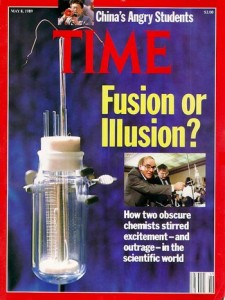 Supporters of the e-cat, while expecting that the launch of the e-cat would trigger a revolution in the energy industry, wonder why does the associated press and the science community pays so little attention. This has various reasons. Many people burnt their fingers during the debacle associated with the famous Fleischmann and Pons cold fusion claims in 1989. Serious scientists and the mainstream media will only look at it again when the evidence is robust.
Supporters of the e-cat, while expecting that the launch of the e-cat would trigger a revolution in the energy industry, wonder why does the associated press and the science community pays so little attention. This has various reasons. Many people burnt their fingers during the debacle associated with the famous Fleischmann and Pons cold fusion claims in 1989. Serious scientists and the mainstream media will only look at it again when the evidence is robust.
Fleischmann and Pons claimed to have fused deuterium to helium over palladium by electrolysis at low temperatures. According to the common understanding of nuclear physics such reaction only occur at very high temperature, such as in plasma or in stars.
It wasn´t the first time such claims were made. 62 years before Fleischmann and Pons, Austrian scientists Friedrich Paneth and Kurt Peters reported in 1927[xvi] the fusion of hydrogen to helium when hydrogen was absorbed by finely divided palladium at room temperature. However, the authors later retracted that report, acknowledging that the helium they measured was due to background from the air.
But with the announcement of Fleischmann and Pons a big media hype started. Rather than following the science protocol of peer review Fleischmann and Pons gave a press announcement and a press conference on March 23, 1989. They even made it to the cover of time magazine, on May 8, 1989.
After this event, thousands of scientists all over the world tried to replicate the experiment, and mostly failed. Unfortunately the revolutionary scientific claims were only poorly reproduced.
Besides, in the early work there was a poor understanding of the underlying scientific basis. This was the show stopper for cold fusion research: poor reproducibility and the lack of a theoretical model.
Conspiracy theorists even go one step further and say that the established community of hot fusion nuclear physicists used their influence to suppress the science and to stop funding of further work.
Rossi´s supporting scientists
Especially in the believers community is a strong argument in favour of Rossi´s e-cat that a group of scientists have backup up the story.
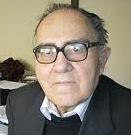 |
 |
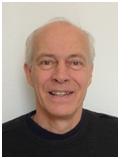 |
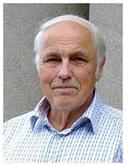 |
|
Sergio Forardi |
Guiseppe Levi |
Hanno Essen |
Sven Kullander |
During 2011 demonstrations, Swedish scientists Prof. Sven Kullander and Hanno Essen witnessed one of the demonstrations. Prof. Sven Kullander is professor emeritus of High Energy Physics at Uppsala University in Sweden, and Hanno Essen is associate professor of theoretical physics and a lecturer at the Swedish Royal Institute of Technology and former chairman of the Swedish Skeptics Society.
Prof. Kullander stated after visiting Rossi and observing a demonstration: ”You just have to embrace a new technology that might solve the energy problems of mankind, at least until it can be rejected” [xvii] and further on Rossi“, I think they used a fairly scientific approach……it has reinforced my impression that he is serious. I find that he is an interesting person to talk to, and I find it hard to imagine that he has indeed created a scam.”
We sincerely do not intend to discredit the integrity of these scientists, but let us check what have they actually witnessed and examined. Then it will be obvious that their endorsement is actually not so strong, as believers tend to assume.
Prof. Kullander in Sweden has examined a sample of the spent fuel, the nuclear ash of one particular e-cat experiment, and actually shown that there is
In an interview with the journal Ny Teknik Prof. Kullander stated (published on 6 april 2011) [xviii]
“measurements show that the pure nickel powder contains mainly nickel, and the used powder is different in that several elements are present, mainly 10 percent copper and 11 percent iron. The isotopic analysis through ICP-MS doesn’t show any deviation from the natural isotopic composition of nickel and copper……calculation shows that a large proportion of the nickel must have been consumed if it was ‘burned’ in a nuclear process. It’s then somewhat strange that the isotopic composition doesn’t differ from the natural.”
Clearly these findings are incompatible with the proposed reaction mechanism of a transmutation. The Swedish experts reconfirmed just recently that there was no indication for a nuclear transformation[xix].
Question : “Were there any isotope analysis of copper powder as you got from Rossi, and the substances showed it on? “ Hanno Essén: “Sven Kullander has done analyzes of this kind. Various substances were found (nickel, iron, copper), but all had their natural isotopic composition and thus no indication of any nuclear reactions with nickel.”
Kullander claimed that there would be a “detailed isotopic analysis” published before Christmas 2011. No such analysis ever appeared.
We will cover this issue more in detail in our next report in regard to what nuclear reaction products and isotope ratios would have been expected.
Just recently, in late 2012, Hanno Essén answered more question[xix]
Question: “There can be no question of chemical reactions in the “fusion machine” that continue to boil the water, instead of nuclear reactions?“ Essén: Like I said estimates of informed individuals shows that it seems unlikely.
Question: “Did you measure the equipment with their own instruments when you observed it?
Essén “No, unfortunately we were too unprepared and unequipped. We checked as much as we could, and few magic tricks we could not notice any. We still hope that Rossi is set up on a proper experiment with full control eventually. “
Earlier Essén stated “It’s very hard to guard against someone who is lying in this context. It’s almost impossible for us to know“[xvii]
Hanno Essén did not examine himself but instead relied on Rossi´s experimental design and his honesty not to play circus tricks. Kullander already stated in 2011 “you assume that the data is presented as honestly as possible”[xx].
However it does not meet the standards of a diligent independent examination which was never allowed by Rossi.
Then there are Italian scientists Sergio Focardi and Guiseppe Levi.
Prof. Sergio Focardi , an Italian physicist, emeritus professor at the University of Bologna. Focardi has conducted research on nickel-hydrogen fusions since many years. Interesting to mention that some of his earlier work has been questioned by CERN scientists with respect to the experimental measurements and conclusions of anomalous heat formation[xxi].
In an interview Prof. Focardi admitted that he does not know what is the essential ingredient in the e-cat process[xxii] :
Interviewer: “What innovations has Rossi introduced to produce these results?”
Focardi: “The nickel hydrogen system contains another additive which is a secret additive with a reserved formula that I don’t know and I don’t want to know and of which I have not asked which is what facilitates the process. Without this additive the process is much less intense”
So, Prof. Focardi does not know and does not want to know what is the “secret catalyst” . This does not really sound very convincing, Focardi, although his name in on the same paper with Rossidoes not seem to be a primary insider. Without knowing the catalyst, it is not possible that Focardi knows how the process operates.
Dr. Guiseppe Levi, Physicist at University of Bologna and INFN, is another insider who participated in the e-cat demonstrations and contributed to the development of the e-cat.
Levi gave his endorsement for Rossi in an interview[xxiii]:
“I have checked there were no hidden wires and we have seen no hidden batteries. Therefore, all our experimental evidence indicates that the device is functional”
 But later it became questionable what measurements Levi made himself. He was challenged by Steven Krivi[xx] with respect to the energy measurement in the experimental design :
But later it became questionable what measurements Levi made himself. He was challenged by Steven Krivi[xx] with respect to the energy measurement in the experimental design :
“But in all the checks Levi made, he did not do any direct measurements of the output heat that would tell him the output energy. This oversight is inexplicable.”
In determination of the energy gained, Rossi used steam instead of liquid water, and the quality of steam (dry or wet) and has a significant impact. It seemed that Levi had either not understood or at least not considered the effect. The revelations by Krivit do not pose a good light on the thermodynamic knowledge of the Bologna team.
Therefore, due to an ill conceived experimental design, an accurate energy assessment was impossible. It looks like there were significant deficiencies of the experiment method.
There were also serious questions raised by Krivit[xx] in respect to the Essén / Kulander visit and the steam issue
“I’m new at steam, unfortunately,” Essén said….. Krivit then asked him “whether, when he pulled the hose out of the wall and saw the steam, he thought about the expansion rate.” Reply: No, I must admit, I was thinking that I must check that the water is not draining out,”
Obviously Essén and Kullander were not in the position to judge the accuracy of the energy measurements.
We will cover the implications of the energy measurement depending on steam quality is in our next report.
Krivit further explained “Levi ….had access to vastly more detailed technical information than Kullander and Essen, and thus I and anyone else interested uncovering the truth behind this complex story, needed to address serious scientific questions not to Rossi but to Levi, an academic scientist who was in a position to provide definitive answers”
Krivit also complained about lack of co-operation or lack of knowledge, respectively :
“I went to Italy in search of the best facts that I thought Rossi, Focardi and Levi might have to support their claims. As my video interviews with the trio show, I asked about their steam measurements. I asked to see scientific evidence for their 18-hour sub-boiling test. I asked to see scientific evidence for their self-sustaining claim. Rossi had the opportunity to show me the volume and velocity of steam exiting directly from his device. Either he did not understand these facts, or he did not want me to see them. I asked to see the best evidence they had for isotopic anomalies. Rossi showed me vague graphs …. I came away virtually empty-handed. Do they have real science? Possibly. Are they mistaken? Possibly. Do they have a technology? I’ve seen no evidence of it.”
If there is an professional explanation to refute Krivit´s allegation about steam quantity and steam quality and associated energy calculation, then why Rossi, Focardi and Levi have never delivered such an explanation ?
It is entirely possible that the conclusions were based on inaccurate measurements and therefore the conclusions and excess heat calculations were wrong as well.
Göran Ericsson, Associate Professor in Applied Nuclear Physics at Uppsala University , explains in a more straightforward way: “It may be that Rossi cheated himself. And it can not rule out a scam either. “
As a bottom line, the supporting scientists never had independent control over the experiment. It seems none of these scientists ever diligently examined an e-cat and conclusions are often based on trusting what Rossi says.
As a support to back up the claims, this is not good enough.
The hunt for independent verification
A conference held in Zurich, Switzerland in September 2012 was expected to disclose an verification by an independent 3rd party and e-cat fans expected the kick off a marketing campaign. It didn´t happen.
What Mr Rossi presented in Zürich, however, was not a performance report of the device he claims to sell since 1 year, it was a report of a new device, the so called hot e-cat. Unfortunately, the performance of the hot cat device was neither independently verified nor did it pass the expected performance criteria.
The report has presented in Zürich by Rossi cannot be considered as an independent study for various reasons[xxiv].
Moreover, the guaranteed input/output performance ratio COP of the (conventional) e-cat is 6, the result of the hot e-cat test was a COP of only 2. And even this was later challenged by one of Rossi´s agent as caused by errors in the measurement of the input energy. The issue is still to be resolved.
Remarkably, on the very day of the Zurich conference the agent hydrofusion has withdrawn his support for the hot e-cat technology and released the following press announcement [xxv]
“Hydro Fusion witnessed a new independent test of the high temperature ECAT prototype reactor ….. indications are that the results …. could not be reproduced. Hydro Fusion cannot at this stage support any claims made, written or other, about the amount of excess heat generated by the new high temperature ECAT prototype.” It is entirely possible that they will review the whole technology concept. Today, almost 3 months later, the website of hydrofusion still shows the same message. This does not sound like hydrofusion would still support the e-cat. It sounds as if hydrofusion has withdrawn its support.
The kick off in the public media also did not happen. Due to many confusions and inconsistencies, the public media have largely ignored the e-cat conference.
In Pordenone[xxvi], Italy, October 12, 2012, Rossi gave another lecture. Now he presented data of a claimed COP of 12, remarkably better than 4 weeks earlier in Zürich. However, there is no independent confirmation on these claims. Today, 2 months later, we still face the same situation.
Before, during and after the conferences, fans have been eagerly awaiting the publication of a credible 3rd party test.
Rossi made a series of remarkable, yet once again contradictory, announcements when the long awaited 3rd party verification would finally be published.
On August 7 Rossi stated “After the validation of the Hot Cat made on July 16th we made today another Third Party Validation, …Of this validation will be made an independent report which will be published soon.”
On Nov 21, 2012 Rossi stated “yesterday the third party validation of the Hot Cat has been completed. Has been good. The results have been better that in the July 16th preliminary test…….
A Report will be published after peer reviewing.”
On Nov 30, 2012 he stated “the third party validation will finish in 2 weeks, after which they will prepare the report”, and explained further on the same day “we met serious problems that we had to resolve, which delayed the tests conclusion.”
It seems there is an endless loop of delays and inconsistencies and we won´t get a serious verification anytime soon.
We wonder why is this so difficult ? We remember since 1 year Mr Rossi claims to sell e-cats to the market. But till today there is not one customer testimonial, no record of sales transactions and not a single real users who can confirm that he purchased and used the device in operation.
Another interesting question is : Since Mr Rossi claims to sell 1MW e-cat since 1 year, and announced the market launch in the EU market, why did he not deliver an independent verification of the device he claims to sell ? Why not a verification of the underlying modules which are comparable to domestic e-cat devices ? Why the development product hot-cat ? Why did he distract the audience with a new device of preliminary R&D stage ? We wonder is this only poor marketing and poor business management, or could these be possibly suspicious indications of larger scale fraud ?
Why can´t Rossi give one e-cat module (claimed to be ion the market since over a year) to an independent tester and have it verified ? There is no need to disclose any secrets, only calorimetric measurements are required to confirm the excess of heat produced compared with energy input.
Product certification
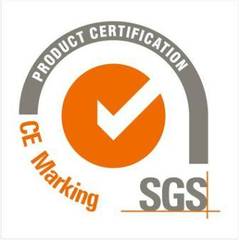 Then there was the confusion of the EU product certification. To sell technical devices in regulated markets such as USA or EU, a product certification is mandatory. In Sept. 2012 Rossi published a CE certificate of well known testing company SGS which is only a voluntary certificate under the EU law[xxvii]. This certificate, however, is not applicable for nuclear devices and does not allow the use for commercial purposes. This means with this certificate
Then there was the confusion of the EU product certification. To sell technical devices in regulated markets such as USA or EU, a product certification is mandatory. In Sept. 2012 Rossi published a CE certificate of well known testing company SGS which is only a voluntary certificate under the EU law[xxvii]. This certificate, however, is not applicable for nuclear devices and does not allow the use for commercial purposes. This means with this certificate
Rossi cannot sell any of his devices in the EU. However, this does not stop Rossi´s distribution partners to use the certificate for advertisement purposes[xxviii].
The CE certificate for EU is not a performance confirmation, it is only a safety certificate.
The process of CE certification has been subject to serious criticism after a series of scandals with medical products and there have been even reported cases of fraudulent CE certificates[xxix].
Patent Problems
There are dark clouds over the e-cat patent (WO2009125444 (A1)[xxx], European patent EP2259998 (A1) [xxxi], US patent US2011005506 (A1) [xxxii]). We already touched this issue in an earlier report[xxxiii] . Our judgment at the time was that we expected rejection of the patent on the grounds of lack of sufficient disclosure and prior art problems. Meanwhile Rossi received a very negative examination report[xxxiv] from the European patent office, and rejection is the inevitable next step. The issues are exactly as we expected a lack of experimental evidence to support the claims, no catalyst disclosed, and too broad claims.
Quotes from the devastating EPO examination report which are self-explanatory :
“The description does not disclose in a manner sufficiently clear the invention . . . In the description it is claimed that the reaction of hydrogen and nickel produces copper and is generating energy. However, there is no explicit evidence of copper and energy as a result of a nuclear reaction .. .
The more the invention contradicts previously accepted technical wisdom, the greater the amount of technical information and explanation is required in the application to enable the invention to be carried out by the skilled person……In the present case, the invention does not provide evidence which would enable the skilled person to assess the viability of the invention . . . it is reported that the process takes place ‘in the presence of unknown catalysts’. No information on the catalyst material from the tube is provided in the description as filed.”
The closest relevant prior art is a 2005 patent by Arata[xxxv] who had already outlined nanosize materials in the use of LENR.
What can Rossi do now to ensure IP protection ? He now has 4 months to provide amendments to the present patent application before final rejection. A more detailed analysis can be found here[xxxvi].
Of course Rossi can file new application based on refined design of a reactor, but he won´t get the early priority date. But then there may be issues with prior art, including his own patent applications, having shown the reactor to so many people and having discussed in public. All of this discussion is now state of the art as well and would no longer be patentable. Even selling e-cats to the market will set a state of the art. Since he claims having sold 1MW units since 1 year there can be a problem.
Even presenting a working device by 3rd party examination report, would not automatically win the case for the patent. The patent examiner would then request documentation that the device operates within the claims of the patent he is supposed to grant, even if we would assume an operating device. And even if we would get a 3rd party verification, it would probably be a hot-cat study that is already outside the preferred range of temperature in the patent which is 150 to 500 °C.
Additionally Rossi could file patents to protect the catalyst. Possibly this is in the pipeline but has not been disclosed yet.
Trademarks
But the certificate issue is not the only restriction for commercialization of the e-cat.
Interestingly, there are various trademarks for “e-cat” in various industrial countries of the world, but Mr Rossi and his associated companies do not hold any of these trademarks. For example, in Germany Siemens is holding the trademark for”e-cat” since the 1980s. Without going into details, in other EU countries and in the USA, other companies also hold trademarks for e-cat. In the US, Rossi tried to file for “e-cat – the next fire” as a trademark but just recently withdrew. the application in the US.
The issue of the trademarks means that Rossi and his team cannot use the name “e-cat” for commercial purposes (for products, for advertisements, for websites) in many markets unless they buy or licence the trademarks, or they have to rename their products.
Why most scientists are skeptical
What are the criteria that would qualify a LENR device to be accepted by mainstream science ?
These qualifying criteria include
- Excess heat larger than in any chemical reaction or other conventional physical process
- Experimental evidence of nuclear reaction products – transmutation, fission or fusion products
- A theoretical model to correlate the experimental data of excess heat with the proposed nuclear process
- Replication of experimental data – independent verification by at least one 3rd party, while experiments are carried out under full control of a qualified testing body.
- Qualified error analysis to make sure the experimental results are safe beyond eventual measurement errors
In the next report we will discuss these points in detail. To be continued.
[i] Hank Mills: “ One Full Year of Andrea Rossi’s E-Cat”
[ii] Gary Wright: “Rossi 1 Year Later”
[iii] Steven Krivit: “2011 – The Failure of Rossi’s Energy Catalyzer, Caught on Video”, http://newenergytimes.com/v2/sr/RossiECat/Andrea-Rossi-Energy-Catalyzer-Investigation-Index.shtml
[iv]Expected e-cat prices: 10 KW home device 600-800 USD, process for industrial e-cat see website of e-cat licencees, e.g. e-cataustralia.com
[v] 97 e-cats continuously operating in four locations worldwide today
[vi] second 1-mw e-cat plant sold – projects exponential growth of sales
[vii] New sale of 1 mw e-cat plant made to normal customer
[viii] http://www.transaltec.ch
[ix] Hank Mills: One Full Year of Andrea Rossi’s E-Cat, “The customer (an undisclosed branch of the US Military) that purchased the one megawatt plant is so satisfied with it, they have ordered a total of thirteen plants! At a price of $2,600,000 per one megawatt plant, this order comes up to almost 34 million dollars. No customer who was not convinced of the technology would make that large of an investment.”
[x] E-catworld: Rossi says Robotized E-Cat Factory Becoming a Reality, Making New Inventions By the Day, news on e-cat robotized factory
[xi] Andrea Rossi on February 1st, 2012: „We are preparing the manufacturing of the million E-Cats”,
[xii] Article in http://ecatreport.com: “Leonardo Corp growing”,
[xiii] LinkedIn profile of Fulvio Fabiani, Tech Director Leonardo Corporation (Miami – USA)
[xiv] Shutdownrossi.com: Roger Green-Robert K-e-mails
[xvi] Paneth, Fritz; Peters, Kurt (1926), “Über die Verwandlung von Wasserstoff in Helium” (in German), Naturwissenschaften 14 (43): 956–962
[xvii] Mats Lewan: “Cold Fusion: You have to embrace this”
[xviii] Kullander interview
[xix] Chat after Swedish TV report, translated from Swedish:
[xx] Steven Krivit : “Report #3: Scientific Analysis of Rossi, Focardi and Levi Claims”,
[xxi] Critique on earlier Focardi paper: Cerron-Zeballos,E. et al., Nuovo Cimento 109 (1996), 1645
[xxii] Interview with Professor Emeritus Sergio Focardi of the University of Bologna
[xxiii] Levi interview
[xxiv] Why the Zurich report was not a 3rd party report: Not only was Mr Rossi´s technical director one of the authors of the report, secondly an employee of his North European agent hydrofusion is the file author of one of the correction documents and thirdly one of the charts used has been created by a user called Cures who was identified by Mr Rossi himself as one of his associates. These findings disqualify the report as an independent study since it was obviously involved to a significant extent the participation of Mr. Rossi´s associates.
[xxv] Hydrofusion announcement after the Zurich conference: http://hydrofusion.com/
[xxvi] Pordenone report of the hot cat
[xxvii] CE certificate by SGS for 1MW e-cat: , http://ecatreport.com/wp-content/uploads/2012/09/Attestato-di-Verifica-Volontaria-1MW-E-Cat-Plant.pdf, SGS is a leading inspection, verification, testing and certification company. With more than 70,000 employees, SGS operates a network of more than 1,350 offices and laboratories around the world.
[xxviii] Website of the German distributor
[xxix] Scandal with breast implants , Joint BMJ/ Telegraph investigation exposes flaws in regulation of medical devices
[xxx]E-cat patent WO2009125444 (A1), inventor Andrea Rossi
[xxxi] E-cat European patent EP2259998 (A1), inventor Andrea Rossi
[xxxii] E-cat United States patent application US2011005506 (A1)
[xxxiii] Mr Rossi´s e-cat patent and black box approach
[xxxiv] http://ecatnews.com/wp-content/uploads/2012/10/EUPatentLetter.gif
[xxxv] Arata: “Hydrogen condensate and method of generating heat therewith”, EP1551032A1, priority date 11.10.2002,
[xxxvi] shutdownrossi.com: Rossi´s EPO patent denied

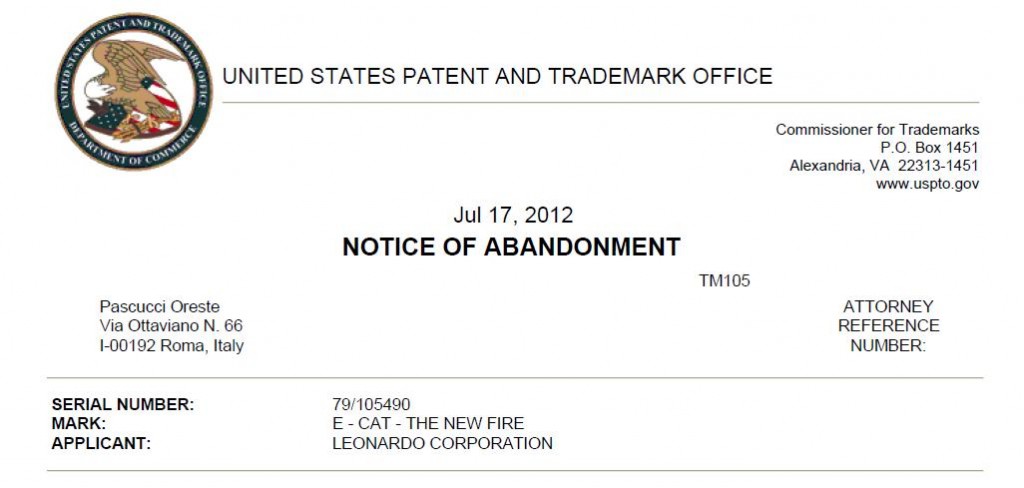
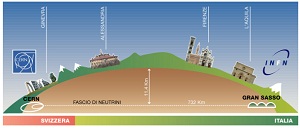
It may be useful to note that the ‘hot’ e-cat looks remarkably like a laboratory tube furnace, covered with some kind of furnace paste.
Dear Christian,
Congrats for this excellent paper- you make a mastery expose of the E-cat Problems.
As regarding the Solutin(s) I think a larger context comprising Defkalion
is necessary.
I am friendly inviting you to a direct discussion and to my blog – backwards from the newest
http://egooutpeters.blogspot.ro/2012/12/the-answerable-answer-of-gary-to-my.html
By the way here you will find the most plausible explanation of the crazy problem of the schmarrn patent of Rossi.
Best wishes,
Peter
[Levi]contributed to the development of the e-cat
That is not true.
In determination of the energy gained, Rossi used steam instead of liquid water, and the quality of steam (dry or wet) and has a significant impact. It seemed that Levi had either not understood or at least not considered the effect
That is not true because Rossi hired a professional only for the quality of the steam measurement, the chemical Galantini. This means that they (Rossi, Levi, Focardi) well known the problem and well considered it.
The fact that Galantini used an inappropriate instrument (although all the observations showed a _dry_ steam during the test) doesn’t mean negligence, and least of all incompetence, by Rossi or Levi.
You should stop saying falsity. Steven Krivit is not God and not every word coming out from his mouth is gold.
All know that Krivit has a personal grudge against Rossi, and all know that he has a personal interest in Widom-Larsen theory that Rossi always says is a bullshit.
on the steam issue: with all due respect, the understanding is really thermodynamic basics, although the precise measurement of steam quality is rather difficult. If then the professional used an inappropriate equipment, as you suggested, does not make it more credible. I will elaborate further on the energy calculations including Galantini´s contributions in the next report.
The question remains, if they knew about the steam issue, as you suggested, why did they unnecessarily complicate the measurements with this ?
If you have a problem with Mr Krivit´s reports, I would appreciate if you would leave out emotions and stick to the technical issues only.
Steam quality measurement is not rather difficult if you know how to do it, this is why Rossi & Focardi asked for Galantini help. Then he failed the measure because he used an inappropriate instrument (it indicated a value that was compatible with a dry steam condition but actually the instrument reading was not true because the instrument had not been made to measure those kind of parameters). The Galantini report talked about a dry steam measurement because beside the instrumental reading, you can do (and he did) other observations, e.g. the dry steam is transparent instead the wet steam is “white” (it means there is little drops of water inside the steam).
I don’t know since you are follow the E-Cat saga, but this is a well known question, it has been talked out a lot in the past. It doesn’t need a further report, also because Rossi never used those kind of setup (now he uses an heat exchanger and measurement has been done without liquid phase change).
I don’t have problem with Krivits report but it’s clear that he doesn’t have the technical background (neither in thermodynamics nor, least of all, in nuclear physics) all his technical “analysis” against Rossi have technical contributes coming from outside.
More than once he went into technical analysis that weren’t for him. He received critics for this (e.g. read on Vortex mail-archive).
There are a lot of things that are nonsense, e.g. this image:
http://newenergytimes.com/v2/sr/RossiECat/img/Randall-Steam-Water-Outflow-70.jpg
that he has proposed again in a recent article.
This image in Krivit’s mind should explain how you can produce unvaporized water instead of dry steam. But those [in the image] aren’t the real conditions inside the E-Cat during the test with Galantini because the hole for the instrument for the steam quality measurement and the thermocouple for temperature measurement were both under the level of the hole for the steam output:
http://www.greenstyle.it/files/2012/01/E-Cat-Universit%C3%A0-di-Bologna-scioglie-il-contratto-far%C3%A0-i-test-gratis1.jpg
Hence the thermocouple had to indicate a value less than 100°C for liquid water (but this wasn’t the case) and, more important, when you take out the instrument for a visual inspection of the steam, liquid water had to come out from the hole, and this never happened. So it is clear that there wasn’t liquid water at the level of the steam output hole, despite that Krivit continues to propose that image.
Nice article, covering e-cat and rossi quite fairly…
However you should look around the others business like Defkalion, like Brillouin Corp, like Lenr-cars, like hunt utility group, like Kresenn, and many scientists strangely getting more and more commercial…
look also at corps and institutions, like National instruments, Toyota, Mitsubishi, EPRI, NASA,Spawar, ST Microelectronics,…
if you want to get more data, we have much on lenr-forum.com…
I try to organize it, and try to see the tag cloud i’m building
http://www.lenr-forum.com/tags.php
just the cloud should make you understand what is happening…
your article, maybe less than many articles I’ve read (track the press forum), is restricted to a small zone of the cloud…
I’m quite furious to see that media, even some i’ve informed have a so shallow and restricted vision of what is happening… You can anyway feel proud to be at the top… hop you can get more data soon with what I carefully gathered… sorry for the bazar-style…
Dear Alain,
thanks for your suggestion. We only came up with e-cat story because of an ongoing project that made us look at these issues. This does not mean that others would deserve less attention. I will definitely include other LENR developments in future coverage.
Excellent, brilliant analysis !
Pingback: Apparato Rossi - Focardi? Verita o bufala? SECONDO VOLUME - Pagina 39
Pingback: The Scientific basis - why scientists question the e-cat
You ought to be a part of a contest for one of the most useful blogs on
the internet. I most certainly will recommend this web site!
Pingback: CERN-Lobbyisten streuen gezielt Desinformationen über E-Cat & Kalte Fusion
Pingback: Higher education business – Ocasapiens - Blog - Repubblica.it
Pingback: Excess heat and isotope changes in e-cat LENR reactor? Part 1